What Is Fabric Hand: Feel, Factors And Why It Matters
Have you ever touched a piece of fabric and instantly felt something—softness, smoothness, stiffness, or maybe a bit of roughness? That feeling is what experts call “fabric hand.” It’s the way fabric feels when you touch it, and it plays a big role in how we choose clothes, design products, and build strong, thoughtful brands.
Whether you’re a fashion creator, a product designer, or simply someone who loves comfortable clothing, understanding fabric hand can help you make better decisions. In this guide, we’ll break it down in simple terms—so you can start seeing (and feeling!) fabric in a whole new way.
1. Understanding how fabrics feel
1.1. Why knowing about fabric hand is useful for everyone?
Knowing how fabrics feel is helpful for anyone who buys or uses fabric items, like clothes or things for your home. But it’s especially important if you make or sell products made from fabric. Understanding fabric hand helps you choose better materials.
This leads to happier customers because your products will be more comfortable and feel like they are higher quality. For your business, a good fabric feel can make your brand seem much better and more thoughtful.
1.2. How understanding fabric can help you?
This knowledge about fabric feel also helps you choose the small but important details, like the labels on clothes or the tags on your products. Think about it – the feel of a label should match the feel of the item it’s on.
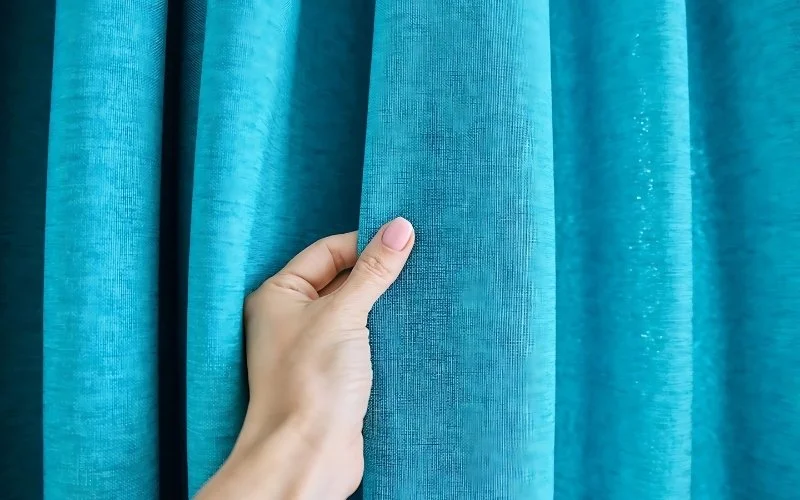
2. What exactly is “fabric hand”?
2.1. Simple definition
So, what exactly is “fabric hand”? It’s simple: “Fabric hand” is the way a fabric feels when you touch it. It’s all about what your fingers tell you when you interact with a material. Is it soft? Is it rough? Is it smooth, or perhaps stiff? Think of it like describing how food tastes. Food has a taste, and fabric has a “hand” or feel. It is the overall impression you get from touching the material.
2.2. Is it soft? Stiff? Smooth? Rough?
“Fabric hand” isn’t just one single thing; it’s the combination of all the feelings you get from a fabric. It’s the sum of these sensations. For example:
- A baby’s blanket might have a soft and gentle hand.
- A strong backpack might have a stiff and sturdy hand.
- A silk scarf might feel very smooth and light.
- An old potato sack might feel rough and coarse.
2.3. It’s a combination of sensations
It’s important to remember that “hand” is a mix of many feelings. While experts might use special tools to measure some of these properties, for most of us, it’s about what we perceive with our own hands. These different feelings come from a few key things: what the fabric is made of, how it’s put together, and any special treatments it has received. Let’s look at those next.
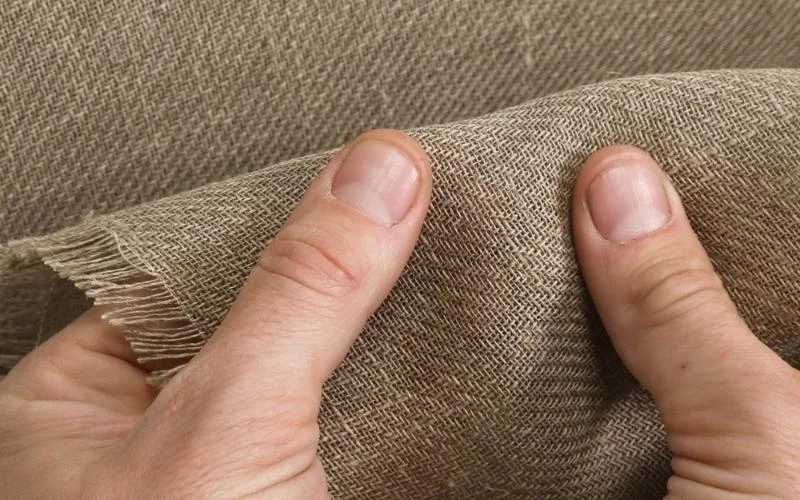
3. What makes fabrics feel different?
Many factors contribute to the unique feel of each fabric. Understanding these can help you make better choices for your products.
3.1. Material type (fiber content)
The biggest thing that decides how a fabric feels is what it’s made from. This is called its fiber content. Fibers are the tiny hairs or threads that make up the fabric. These fibers can be divided into two main groups: natural fibers (from plants or animals) and man-made fibers (created by scientists).
Natural fibers often feel a certain way, while man-made fibers can be designed to feel many different ways. When we help customers choose labels at Packlove, the fiber of the label material, like cotton or polyester, is a key starting point because it heavily influences the final feel.
1. Natural fibers:
These come from nature, like plants or animals.
- Cotton: Usually feels soft, lets your skin breathe (breathable), and is comfy. Think of your favorite t-shirt. Some cotton, like Pima cotton, is extra soft. It’s great for t-shirts, jeans, baby clothes, and even some of our Cotton Labels which give a nice, natural feel.
- Silk: Feels very smooth, a bit shiny (lustrous), light, and luxurious, like a fancy scarf. It’s used for blouses, dresses, and some high-end labels aim for this silky feel.
- Wool: Can be soft (like Merino wool for sweaters) or a bit coarser. It’s usually warm and can feel a bit springy. Good for sweaters, coats, and suits.
- Linen (from flax plant): Feels cool, a bit crisp, and gets softer the more you wash it. Good for summer clothes.
- Hemp: Strong and gets softer over time. Used for durable clothes and bags.
2. Man-made fibers (also called synthetic fibers):
These are created by scientists in factories.
- Polyester: Can be made to feel many ways – smooth, a bit crisp, or even soft like cotton. It’s strong, dries quickly, and often used in clothes that need to last. Many sports clothes are polyester. It’s also very common for Woven Labels (a label made by weaving threads together, like on clothing necklines) from Packlove because it can be woven very finely to be soft and detailed.
- Rayon (also called Viscose): Often feels soft and hangs nicely (good drape). It can feel a bit like silk or cotton. Used for dresses, blouses, and linings.
- Nylon: Smooth, strong, and a bit stretchy. Used for things like stockings or activewear.
- Spandex (also called Lycra or Elastane): Very, very stretchy! It’s usually mixed with other fibers to make clothes comfortable and allow them to stretch, like in jeans or sport bras.
3.2. Fabric construction
Next, how the fibers are put together to make the fabric also changes the feel. The two main ways are weaving and knitting. Generally, woven fabrics (like your jeans or bedsheets) are made by threads going over and under each other, making them often feel more firm and keep their shape. Knitted fabrics (like your t-shirts or sweaters) are made of loops of thread, so they are usually stretchier and softer.
1. Woven fabrics:
In woven fabrics, threads go in two directions, much like a basket weave.
- Taffeta: Often feels crisp, smooth, and might make a slight rustling sound. It’s not usually the softest but can be very detailed. Some basic labels are made this way.
- Satin weave: Makes the fabric very smooth and shiny on one side.
- Twill weave: You see this in denim jeans or chino pants. It has diagonal lines and feels quite strong and durable.
- Damask weave (for labels).
2. Knitted fabrics (loops of thread):
- Jersey knit: This is what most t-shirts are made of. It’s stretchy, usually soft, and comfortable.
- Rib knit: Has lines (ribs) you can see and feel. It’s very stretchy and often used for cuffs on sleeves, collars, or for snug-fitting tops.
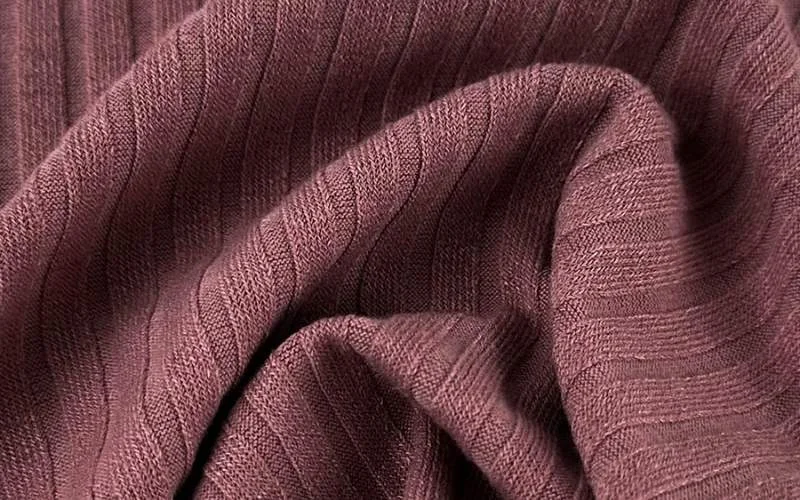
3.3. Finishing treatments
Even after a fabric is made, it can be treated to change how it feels. These are called finishing treatments. These can make a fabric softer, stiffer, shinier, or add other properties like being water-resistant.
Examples of finishing treatments:
- Brushing: Makes fabric fuzzy and soft, like flannel shirts. Tiny brushes lift up the fibers.
- Calendering: Hot rollers press the fabric to make it very smooth, dense, and sometimes shiny.
- Special washes: Like ‘stone washing’ for jeans to make them softer and look worn-in. Other washes use gentle things (enzymes) to soften fabric.
- Mercerization: A treatment for cotton that makes it stronger, shinier, take color better, and feel smoother.
3.4. Thickness and weight
How thick or heavy a fabric is also changes how it feels in your hand. Thickness can be measured, and weight is often talked about as GSM (grams per square meter – a measure of paper weight and thickness) – basically, how much a square piece of the fabric weighs.
A thicker, heavier fabric (like a warm fleece jacket) will feel more substantial and might feel more durable or warm. A thinner, lighter fabric (like a delicate chiffon scarf) will feel airy and light. This is often linked to the fiber type and how it’s made, but it’s another part of the overall ‘hand’.
4. Words to describe fabric hand
4.1. Common words used to describe how fabrics feel
Here are some common words people use to talk about fabric hand. Knowing these can help you describe what you feel!
- Soft: Nice and gentle to touch, not hard or rough.
- Stiff: Doesn’t bend easily, holds its shape.
- Firm: Solid, not too soft, not too stiff.
- Limp: Hangs loosely, doesn’t hold shape well.
- Smooth: Flat and even, no bumps.
- Rough: Not smooth, has an uneven surface.
- Coarse: Very rough, like sandpaper.
- Sleek: Smooth and often a bit shiny.
- Drapey: Hangs in soft, flowing folds (good drape).
- Flowy: Moves easily and gracefully.
- Crisp: Feels fresh and a bit stiff, might make a little noise (like new paper money).
- Spongy: Feels soft and a bit airy, like a sponge.
- Bumpy: Has small raised bits on the surface.
- Papery: Feels thin and a bit stiff, like paper.
- Light: Doesn’t weigh much, feels airy.
- Heavy: Weighs more, feels substantial.
4.2. Feeling when you touch different fabrics
The best way to learn is to touch fabrics yourself! When you touch different clothes or materials, try to use these words, or even come up with your own, to describe how they feel. What does your favorite shirt feel like?
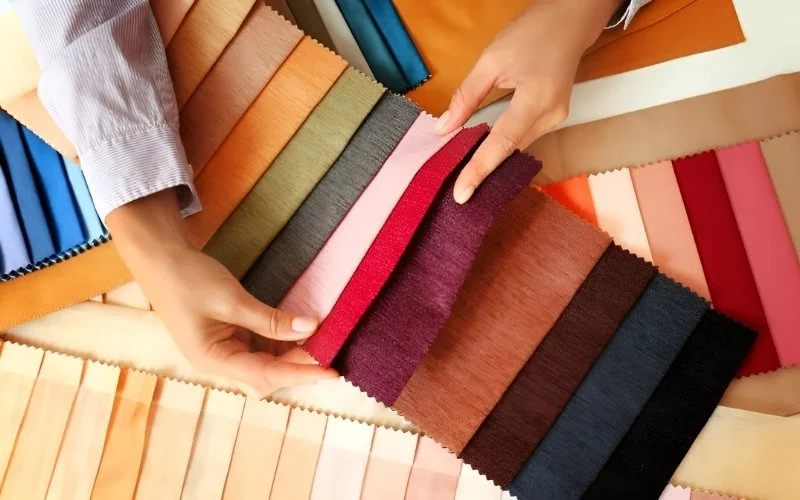
5. Why is fabric hand so important?
Fabric hand plays a critical role in how we experience and perceive textile products.
5.1. For comfort
Comfort is a huge reason why fabric hand matters. Nobody likes wearing something that feels bad! How a fabric feels directly against your skin makes a big difference in whether you want to wear it or use it. An itchy sweater or a scratchy t-shirt is no fun.
1. How clothes feel when they touch your skin.
Think about it – clothes are on your skin all day. If the fabric is rough, stiff in the wrong places, or doesn’t breathe, you’ll feel it.
2. Especially important for things like baby clothes, sportswear, and clothes you wear every day.
- Baby clothes: Babies have sensitive skin, so their clothes need to be extra soft and gentle.
- Sportswear: When you exercise, you want fabric that feels smooth, maybe wicks away sweat, and doesn’t rub or chafe.
- Everyday clothes: For the clothes you live in, comfort is key for a good day!
5.2. For product quality and how people see your brand
How a fabric feels strongly suggests its quality. A fabric with a nice hand often makes people think the product is well-made and worth more. A beautiful design can look cheap if the fabric feels poor or flimsy. But a simple design can feel luxurious if the fabric hand is amazing.
This connects to your brand. If you want your brand to be seen as high-quality, caring about details, or luxurious, the hand of your fabric (and even your labels and tags!) helps tell that story.
1. How a product feels can make people think it’s high quality or low quality
Imagine two t-shirts. One is thin, feels a bit rough, and the stitching looks weak. The other is soft, has a nice weight to it, and feels smooth. Which one do you think is better quality, even if they look similar from far away?
2. The right feel can make a product seem more special or long-lasting
A fabric that feels good in the hand suggests durability and care in making the product. It makes the item feel more valuable and like it will last.
5.3. For how a garment looks and moves
Fabric hand also affects how clothes look when you wear them, especially how they hang (this is called drape) and the overall shape (silhouette). A stiff fabric will hold its shape more, maybe creating a structured, boxy look. A soft, fluid fabric will drape nicely over the body and flow when you move, creating a softer outline. One isn’t better than the other – it depends on the style you want!
1. Drape: This means how the fabric hangs and flows. A soft fabric will drape differently than a stiff one
Think of a curtain. Some curtains hang in stiff folds, others hang in soft, wavy folds. That’s drape!
2. Shape: A stiffer fabric will hold its shape, while a softer one might not
A tailored jacket needs fabric with enough stiffness to keep its sharp shape. A flowy summer dress needs soft, drapey fabric.
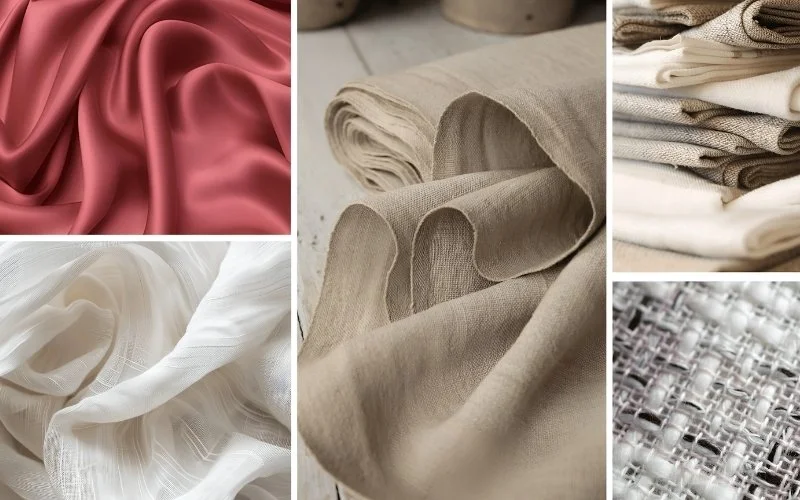
Now, let’s connect this to something very important for your brand: your labels and tags. The ‘hand’ of these items matters too! The feel of your label should match and complement the feel of your garment or product. It shouldn’t fight it or make it worse.
You wouldn’t want a thick, stiff, scratchy label on a delicate silk blouse or a soft baby onesie. It would ruin the comfortable feel of the product and annoy your customer. But a soft, smooth label, or even a ‘tagless’ Heat Transfer Label from Packlove, can make the garment even more comfortable and show you care about the details.
Even the feel of your hang tags contributes. A flimsy paper tag feels cheap, but a sturdy, nicely textured tag from Packlove can give a great first impression of quality. At Packlove, we guide our customers to choose label and tag materials that have the right ‘hand’ for their specific products and brand image.
6. How to feel and judge fabric hand: a quick guide
6.1. Use your sense of touch
The best way to judge fabric hand is to use your own hands! Here are some simple steps:
- Rub it: Gently rub the fabric between your fingers and thumb. Is it smooth, silky, rough, sandy, or fuzzy?
- Hold it and let it hang: Hold a piece in your hand and let it fall. Does it hang softly (good drape) or is it stiff?
- Give it a gentle pull (if it’s meant to stretch): Does it stretch easily? Does it go back to its shape quickly? (Be careful not to pull too hard or damage it).
- Feel the surface and bend it: Is the surface flat or bumpy? Does it bend easily or resist?
6.2. Compare different fabrics
A great way to understand fabric hand is to compare different fabrics you already own. Try this: Feel your favorite cotton t-shirt. Now feel a silk scarf (or something silky). Then feel your denim jeans. Notice how different each one feels in terms of softness, smoothness, thickness, and how they bend or hang. This helps you build your ‘feel’ vocabulary and understanding.
6.3. There is no “best” fabric hand
It’s key to remember that there’s no single ‘best’ fabric hand. What’s ‘good’ depends entirely on what the fabric will be used for.
- A backpack needs a stiff, durable, and maybe rough hand to be strong and last long. You wouldn’t want a soft, flimsy backpack.
- A flowy evening dress needs a soft, drapey, and smooth hand to look elegant. You wouldn’t want it made from stiff canvas.
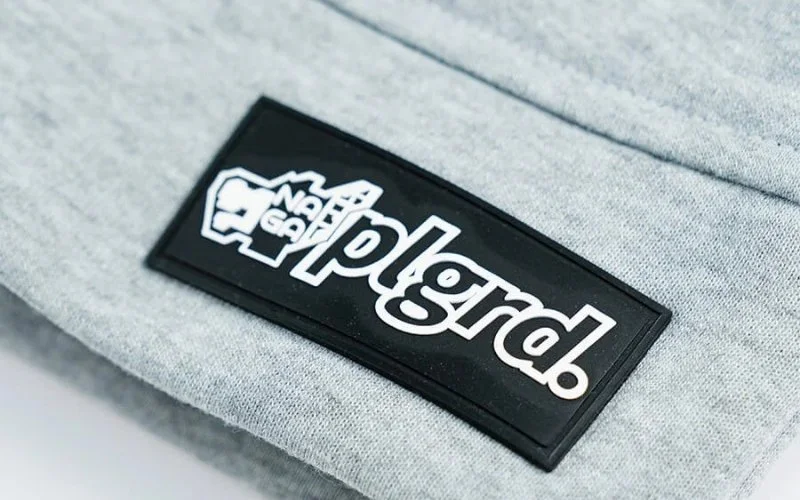
7. Fabric hand and your brand
Your branding elements are a direct reflection of your product’s quality. Let’s explore how to choose labels and tags that enhance this.
7.1. The main idea
When it comes to your brand, every little detail matters. The ‘hand’ of your labels and tags is one of those details that can make a big difference. The golden rule is: your branding elements should enhance your product’s feel, not take away from it. A scratchy label or a flimsy tag can cheapen an otherwise great product.
7.2. Matching the label’s feel to the garment’s feel
1. For soft, delicate clothes:
These items are right next to sensitive skin, so comfort is number one!
Soft woven labels
Our Packlove Woven Labels, especially those with a Damask weave, are a fantastic choice. They are woven very finely, which makes them incredibly soft and allows for beautiful, detailed designs.
Materials like finely woven polyester can feel almost like satin. These offer a premium, gentle touch. Benefits include a luxurious feel, very soft on skin, durability, and a high-end look.
Heat transfer labels (tagless tags)
For the ultimate ‘no-feel’ feel, Packlove Heat Transfer Labels are perfect. These are applied with heat and become part of the fabric itself. Benefits include zero scratchiness, completely smooth, ideal for babywear, lingerie, activewear, or any garment where you want the brand info without a traditional label. You can barely feel them – just smooth fabric.
2. For strong, everyday clothes:
These clothes need labels that are comfortable but also durable enough for regular wear and washing.
Cotton labels
If your brand has a natural or eco-friendly vibe, Packlove Cotton Labels are a great fit. They offer a soft, natural hand feel. Benefits include a natural look and feel, breathability, softness, and suitability for brands valuing sustainability. They feel pleasantly soft and natural to the touch.
Standard polyester woven labels
Our standard Packlove Polyester Woven Labels are very versatile. Polyester is strong and can be woven to achieve good softness, especially with a satin weave or a quality taffeta (if ultra-softness isn’t the top priority but durability and clear print are). Benefits include high durability, good detail retention, and cost-effectiveness for larger quantities; they can also be made quite soft.
3. For jackets, bags, or items needing a unique, tough label:
For outerwear, bags, or accessories, you might want a label that stands out and is extra tough.
Packlove Rubber Labels (made from PVC or silicone) offer a completely different tactile experience. They are modern, durable, and can even be made with 3D designs. Benefits include high durability, waterproofness, flexibility, a unique modern look, and an added tactile design element.
They feel flexible yet strong, often with a smooth or slightly grippy surface. The 3D effect is great to touch.
Don’t forget your hang tags! These are often the first physical piece of your brand a customer touches in a store or when unboxing. The ‘hand’ of your hang tag comes from the paper or cardstock it’s made from.
A flimsy, thin paper tag can feel cheap. But a Packlove Hang Tag made from thick, sturdy cardstock – perhaps with a nice texture like uncoated paper, a smooth matte finish, or even eco-friendly Kraft paper – instantly feels more premium.
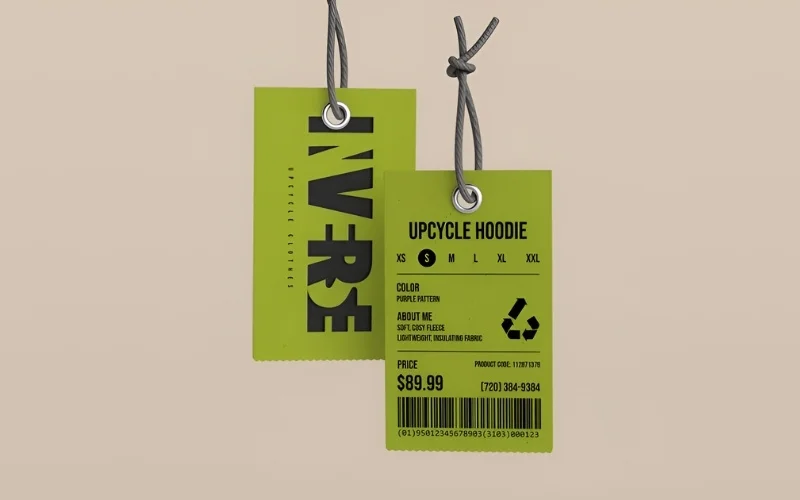
7.4. Packlove helps you: We offer many material choices
Feeling a bit overwhelmed by choices? Don’t worry! The team at Packlove is here to help. We offer a wide range of materials for all our products – woven labels, heat transfer labels, rubber labels, hang tags, zipper bags, and poly mailers – precisely so you can find the perfect ‘hand’ that matches your product and your brand.
We focus on quality materials because we know that how something feels communicates a lot about your brand. If you’re unsure which material will provide the best hand for your needs, just ask us! We can explain the options and help you decide.
Even for Packlove Zipper Bags, the thickness and finish (like a soft matte touch vs. clear glossy) of the plastic contribute to the perceived quality. For Packlove Poly Mailers, a sturdy, smooth mailer feels more reliable than a thin, crinkly one.
8. Frequently Asked Questions (FAQs)
8.1. Is “fabric hand” the same thing as “texture”?
Not exactly, but they are related! Texture (like if a fabric is smooth, bumpy, or ribbed) is one part of fabric hand. Fabric hand is the overall feeling you get when you touch a fabric. This includes its texture, but also its softness or stiffness, how it drapes or hangs, how flexible it is, if it feels cool or warm, and even how thick or heavy it is.
So, texture is a piece of the puzzle, but fabric hand is the whole picture of how it feels.
8.2. What’s the best fabric hand for t-shirts?
That depends on the style of t-shirt you want! Many people prefer t-shirts that are soft, breathable (let air pass through easily), and have a bit of stretch for comfort. That’s why cotton and cotton blends are so popular.
However, a thick, oversized ‘boxy’ t-shirt will have a heavier, perhaps stiffer hand than a thin, drapey, fitted t-shirt. There’s no single ‘best’ – it’s about matching the hand to the desired look, feel, and use of that specific t-shirt.
8.3. How can I make sure my clothing labels are comfortable?
Great question! For comfortable clothing labels, choose soft materials. At Packlove, we recommend:
- Soft woven labels: Especially our Damask weave polyester labels, which are very fine and soft. Satin weave polyester is also smooth.
- Cotton labels: These have a naturally soft feel.
Heat transfer labels (tagless tags): These are printed directly onto the fabric, so there are no edges to cause irritation – they are extremely comfortable. Also, consider the label edges.
8.4. Does Packlove offer samples so I can feel the label materials?
Yes, absolutely! We understand that feeling the material is crucial when choosing labels and tags. At Packlove, we offer sample kits that include examples of our different label materials like woven labels, heat transfer options, rubber labels, and cardstocks for hang tags.
This way, you can experience the ‘hand’ of each option firsthand and choose with confidence. Our Value Booster Kit also includes a range of our product samples. This is the best way to ensure you get the perfect feel for your brand!
Explore more:
Fabric hand may seem like a simple idea, but it makes a big difference in how we experience clothes, accessories, and all kinds of textile products. From the comfort we feel when wearing a t-shirt to the impression a label or tag gives on a new garment, the way fabric feels truly matters.
Now that you understand what affects fabric hand and why it’s so important, you can make smarter choices for your products, your brand, or even your personal style. So next time you touch a fabric, take a moment to really feel it — because in the world of textiles, feel is everything.






















